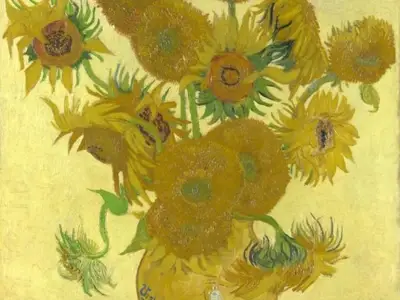Let’s discuss 3 primary methods you can use to evoke emotion within your paintings. These methods have been used throughout the history of painting to create some of the most famous works of art, and today, I’m going to share 3 of the most essential ones with you.
These 3 methods may seem basic, but they can take a lifetime to master.
By incorporating all three of these methods into your paintings, you’ll be able to evoke emotion through your art sooner than you know.
Colour
A rudimentary understanding of colour theory might help your artworks have a stronger emotional impact. It discusses how humans sense colours, the visual consequences of combining, matching, and contrasting them, and the information they might convey. Colours can have a significant impact on how we react to art. Looking at the colour red, for example, has been found in studies to increase heart rate!

Picasso’s Blue Period is an excellent illustration of how colour can be utilised to express emotion; his frigid palette of grey and blue wonderfully depicts his figures’ sadness. Sunflowers (1888) by Vincent Van Gogh, on the other hand, uses bright yellow and orange tones to convey thoughts of hope and joy.
Lighting
All aesthetic experiences have the potential to elicit powerful emotions. We start creating connections as children to understand simple concepts. When a bottle emerges, we know it’s time to eat, and when the lights lower, we know it’s time to sleep. As we become older, though, these associations become more conceptual, and we begin to identify certain visuals with specific feelings. Personal memory, a specific culture, or a broader human consciousness can all be sources of these linkages. When we look at art, each expression, colour, or symbol functions as a visual signal, evoking these deep-seated associations and eliciting an emotional response.

We frequently use light as a metaphor for a person’s personality. A cheerful person is said to ‘light up the room,’ whereas a more menacing disposition is called a ‘dark character.’ It’s vital to keep these implications in mind when choosing lighting for your subject. Darker images evoke sentiments of grief, evil, mystery, or illegality, whereas lighter ones evoke sentiments of joy, openness, or freedom. Caravaggio’s use of chiaroscuro, a technique that combines stark contrasts between light and dark to emphasise the emotional intensity of a scene or the psychological depth of a topic, made him famous.

The direction of light can also help to set an emotional tone. In Raphael’s The Transfiguration (1516–20), light from above can generate a sense of tranquilly or make a gesture towards the sublime. Light from below, sometimes known as “horror lighting,” can make us feel uneasy because of its unusual location, which distorts face features and exaggerates shadows around the eyes.
Composition and perspective
The viewer’s experience of the artwork is shaped by composition and perspective. Composition can assist set the rhythm or atmosphere of a piece, while perspective can assist us locate ourselves within the piece of art and call upon our ability to empathise. Because we are driven to symmetry as humans, artworks with symmetrical compositions can provide a sense of harmony, whereas asymmetrical, packed, or imbalanced compositions can create a sense of chaos or awkwardness.

Our gaze is frequently directed upwards in religious art to produce a sense of awe. This is repeated in the work of romantic artists such as Turner and Constable, who painted enormous, dramatic landscapes punctuated with little figures to emphasise the immensity of nature.
Because distance and space are directly tied to emotion, consider the proximity of your topics if your work is figurative. As in Edward Hopper’s paintings, a solitary figure or two persons set apart in a confined space can evoke grief by inferring loneliness and isolation. Multiple figures in an open space, on the other hand, may evoke sentiments of unity or togetherness. Whatever emotion you want to elicit in your audience, these easy composition and perspective methods can help you get there.
Information Citations
En.wikipedia.org, https://en.wikipedia.org/.

























